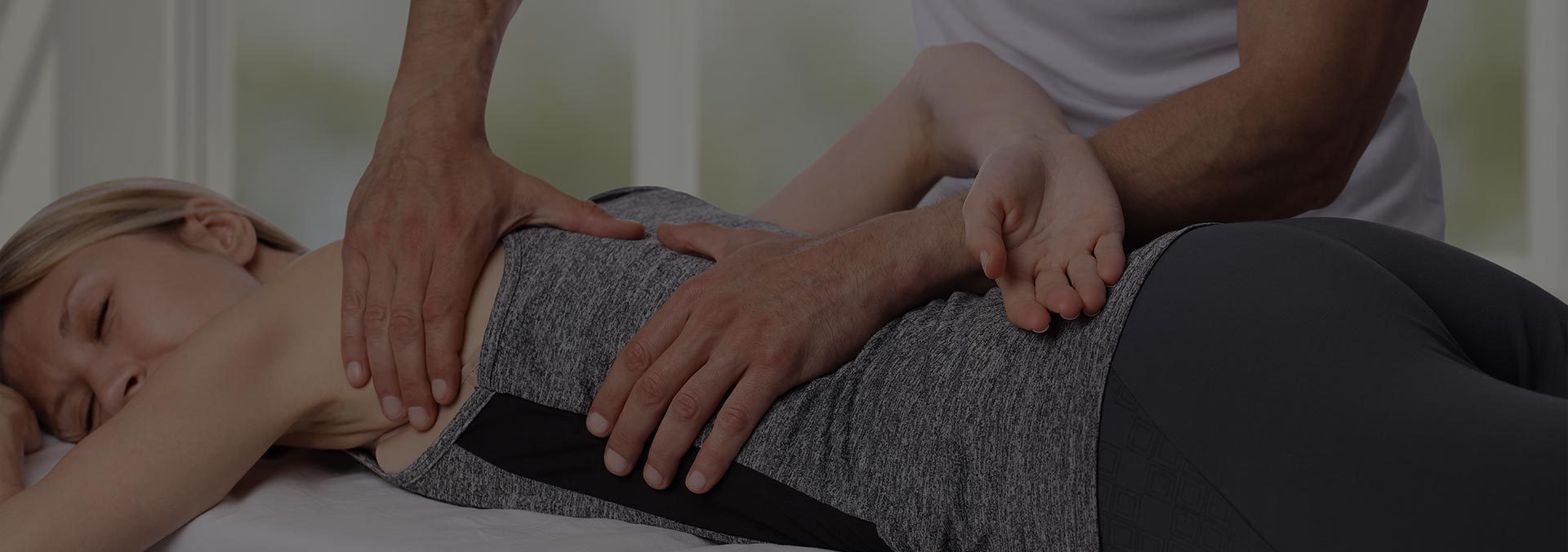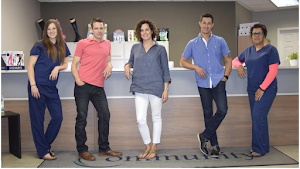by Sarah Dale
Share

“Poor posture” has a real diagnosis.
Introduction
‘Poor Posture’ or Upper Crossed Syndrome (UCS) is a condition of high prevalence in today’s society. Even with the stress of proper posture and ergonomic adaptations, the characteristic symptoms of UCS are still one of the major health complaints in North America.
What is Upper Crossed Syndrome?
Upper-Crossed Syndrome (UCS) is also referred as proximal or shoulder girdle crossed syndrome. In UCS, tightness of the upper trapezius and levator scapula muscles on the back side of the body cross with tightness of the pectoralis major and minor which are found on the front of the body. Weakness of the deep neck flexors on the front of the neck cross with weakness of the middle and lower trapezius on the back of the body. This pattern of imbalance creates joint dysfunction, particularly in the neck and upper back.
In 1979, Dr Vladimir Janda, a Czech Physician and Physiatrist first identified the common muscle imbalance denoted the upper cross syndrome. Janda noted that these focal areas of stress within the spine correspond to transitional zones in which neighboring vertebrae change in structure.
Specific postural changes are seen in UCS. This includes forward head posture, increased cervical lordosis and thoracic kyphosis, elevated and protracted shoulders, and rotation or abduction and winging of the scapulae..
How does Upper Crossed Syndrome Develop?
UCS is the consequence of chain reaction morphological, structural and biomechanical changes over time, predominantly due to habitual habits and routines. Contrary to popular belief, UCS does not begin in the upper back and neck. Rather it is a chain reaction occurring throughout the spine, from the position of the pelvis to the position of the head.
It starts with a simple posterior pelvic tilt. Although a posterior pelvic tilt can be the cause of several somatic dysfunctions, the main cause is due to poor sitting posture. Poor sitting posture encourages a posterior pelvic tilt (a counter-clockwise cogwheel) that reduces the normal lordosis of the lumbar spine. This reverses the normal kyphosis of the thoracic spine through a counter-clockwise cogwheel that then creates a counter-clockwise cogwheel within the cervical spine. This final cogwheel influences the forward position of the head in typical poor posture.
The degree of forward position of the head increases the normal effective weight on the spine causing a decreased in cervical lordosis (curvature). This decrease in curvature creates the perfect storm which manifests as an Upper Crossed Pattern, as described above.
What Health Problems can UCS lead?
- Spinal Degeneration
- Cervicogenic Type and/or Tension Headaches
- Shoulder, Neck and Upper Back Pain
- Tightness and Pain in the Chest
- Pain and/or numbness in the upper limbs
- Chronic Fatigue Syndrome
- Low Back Pain
- Myofascial Adhesions
- Reduced Lung Capacity
- Nerve Impingement and Compression
- Rotator Cuff Injury
- And More!
Treatment Options for UCS
There are many treatment philosophies regarding UCS focusing on structural and functional approaches. However, the best method of treatment of UCS is to prevent if from happening in the first place. If you are past the point of prevention, early detection and implementation of a functional approach such as the “Janda Treatment Approach” can be beneficial.
The Janda Treatment Approach
- Normalize the periphery. The Janda approach to treatment of musculoskeletal pain follows several steps. Treatment of muscle imbalance and movement impairment begins with normalizing afferent information entering the sensorimotor system. This includes providing an optimal environment for healing (by reducing effusion and protection of healing tissues, restoring proper postural alignment (through postural and ergonomic education), and correcting the biomechanics of a peripheral joint (through manual therapy techniques).
- Restore Muscle Balance. Once peripheral structures are normalized, muscle balance is restored. Normal muscle tone surrounding joints must be restored. Sherrington’s law of reciprocal inhibition (Sherrington, 1907) states that a hypertonic antagonist muscle may be reflexively inhibiting their agonist. Therefore, in the presence of tight and/or short antagonistic muscles, restoring normal muscle tone and/or length must first be addressed before attempting to strengthen a weakened or inhibited muscle. Techniques to decrease tone must be specific to the cause of the hypertonicity. These include post-isometric relaxation (PIR) (Lewit, 1994) and post-facilitation stretch (PFS) (Janda, 1988).
Muscles that have been reflexively inhibited by tight antagonists often recover spontaneously after addressing the tightness. In the Janda approach, the coordinated firing patterns of muscle are more important than the absolute strength of muscles. The strongest muscle is not functional if it cannot contract quickly and in coordination with other muscles; therefore, isolated muscle strengthening is not emphasized in the Janda approach. Instead, muscles are facilitated to contract at the proper time during coordinated movement patterns to provide reflexive joint stabilization.
- Increase afferent input to facilitate reflexive stabilization. Once muscle balance has been addressed, Janda stresses increasing proprioceptive input into the CNS with a specific exercise program, “Sensorimotor Training” (SMT) (Janda & Vavrova, 1996). This program increases afferent information entering the subcortical pathways (including spinocerebellar, spinothalamic, and vestibulocerebellar pathways) to facilitate automatic coordinated movements. SMT involves progressive stimulation through specific exercises with increasing level of challenge to the sensorimotor system. SMT has been proven to improve proprioception, strength, and postural stability in ankle instability (Freeman et al. 1965), knee instability (Ihara & Nakayam, 1996), and after ACL reconstruction (Pavlu & Novosadova, 2001).
- Increase endurance in coordinated movement patterns. Finally, endurance is increased through repetitive, coordinated movement patterns. Since fatigue is a predisposing factor to compensated movement patterns, endurance is also more important than absolute strength. Exercises are performed at low intensities and high volumes to simulate activities of daily living.
Conclusion
Upper Crossed Syndrome is a complex neuromusculoskeletal condition which can be manifested by multiple pathologies. It is important for clinicians to keep holistic approach in mind rather than focusing on the symptomatic region, to effectively diagnose and treat Upper Crossed Syndrome.
Before implementing any treatment, it is important to consult your physician, chiropractor, osteopath or physiotherapist ensuring the best diagnostic examination and treatment options for your condition.



